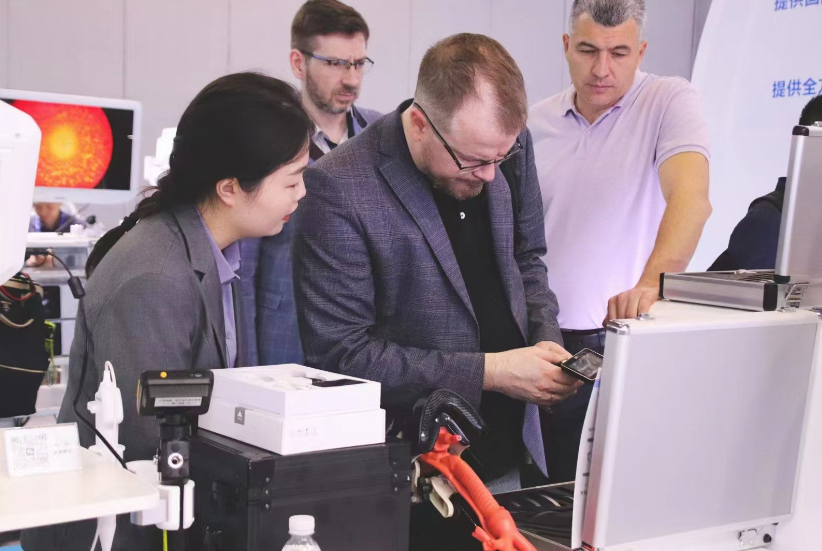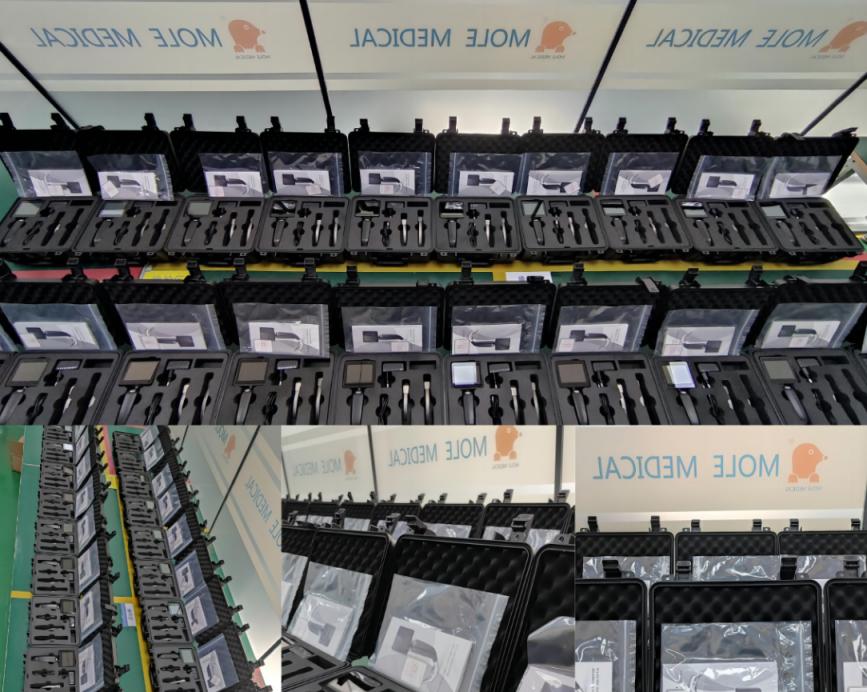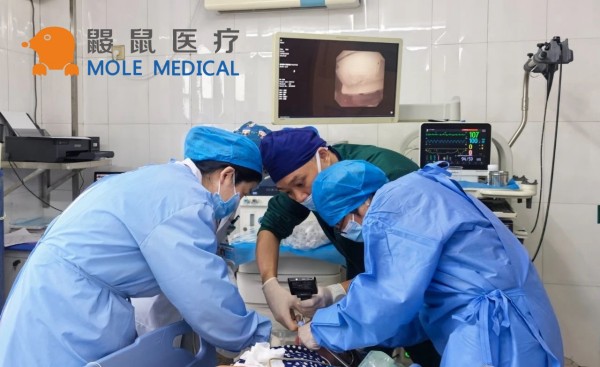Types of Intubation Blades Diversity: How Do Different Designs Address Clinical Needs?
Jun 07, 2024
Intubation is a critical procedure in emergency medicine and anesthesia, requiring precise tools for airway management. Among the essential equipment utilized are Types of Intubation Blades, each designed to address specific challenges encountered during intubation. In this comprehensive guide, we delve into the various types of intubation blades manufactured by Mole Medical, examining their market status, unique features, and solutions they offer to meet clinical needs.

Traditional Macintosh Blade:
1.1 Market Status:
The Traditional Macintosh Blade remains a staple in airway management, widely used in routine intubations across medical settings. Its curved design facilitates the lifting of the epiglottis to visualize the vocal cords, aiding in successful intubation. However, its effectiveness diminishes in difficult airway scenarios where maneuverability is limited.
1.2 Needs:
One of the primary needs identified with the Traditional Macintosh Blade is improved maneuverability, especially in cases of restricted access or anatomical challenges. Clinicians require tools that can navigate through difficult airways with ease while ensuring patient safety.
1.3 Solution:
To address these needs, Mole Medical has introduced an enhanced design of the Traditional Macintosh Blade. This updated version features a tilting tip mechanism, allowing for better navigation through difficult airways. The tilting tip enables clinicians to adjust the angle of the Types of Intubation Blades, optimizing visualization and facilitating smoother intubation procedures even in challenging scenarios.
Enhanced Maneuverability: The tilting tip design enhances maneuverability, enabling clinicians to navigate through restricted access areas with greater ease.
Improved Visualization: By providing better visualization of the vocal cords and surrounding anatomy, the enhanced Macintosh Blade increases intubation success rates, particularly in difficult airway cases.
Enhanced Safety: The incorporation of innovative features prioritizes patient safety, reducing the risk of complications during intubation procedures.
Miller Blade:
2.1 Market Status:
The Miller Blade is renowned for its straight design, making it particularly suitable for pediatric and neonatal intubations. Its slender profile and precise tip facilitate visualization of the vocal cords in smaller airways, contributing to successful intubations in pediatric patients. However, its application in adult intubations is limited, necessitating adaptations to cater to a broader patient demographic.
2.2 Needs:
Clinicians recognize the need for adaptability in Miller Blade designs to accommodate adult intubations effectively. Additionally, there is a demand for improved visualization capabilities to enhance intubation success rates across different patient populations.
Video Laryngoscope Blades:
3.1 Market Status:
Video laryngoscopes have gained prominence in recent years for their superior visualization capabilities, revolutionizing the field of intubation. These devices incorporate a camera at the tip of the blade, providing real-time images of the airway on a monitor, thus enhancing the clinician’s ability to navigate through challenging anatomies.

3.2 Needs:
The increasing reliance on video laryngoscope blades underscores the importance of addressing key concerns related to their performance and compatibility. Clinicians seek solutions that offer enhanced durability to withstand repeated use and compatibility with a wide range of intubation equipment, ensuring seamless integration into existing workflows.
3.3 Solution:
In response to these needs, Mole Medical has focused on integrating advanced materials and designs into their video laryngoscope blades, enhancing both performance and longevity. By leveraging innovative technologies, such as reinforced materials and improved camera systems, Mole Medical aims to provide clinicians with reliable tools that deliver exceptional visualization and durability.
Enhanced Durability: Mole Medical’s video laryngoscope blades feature reinforced materials and robust construction, ensuring longevity and reliability even in demanding clinical environments.
Compatibility: Designed to be compatible with a wide range of intubation systems, Mole Medical’s video laryngoscope blades offer clinicians flexibility and versatility in their airway management practices.
Superior Visualization: By incorporating high-resolution camera systems and advanced optics, Mole Medical’s video laryngoscope blades provide clinicians with clear, detailed images of the airway, facilitating accurate placement of the endotracheal tube and reducing the risk of complications.
Best Types of Intubation Blades Partner: Advantages of Handheld Video Laryngoscope:
4.1 Compact Design for Enhanced Portability:
The Handheld Video Laryngoscope boasts a compact design, enhancing its portability and suitability for use in diverse healthcare settings. From busy hospital wards to remote emergency response scenarios, this device remains readily accessible, ensuring prompt and effective airway management when every second counts.
4.2 Superior Visualization with High-Resolution Camera:
At the heart of the Handheld Video Laryngoscope lies its integrated high-resolution camera, providing clinicians with a detailed view of the larynx during intubation procedures. This level of visualization is crucial for successful intubations, particularly in cases of difficult airways where precision is paramount. By minimizing guesswork and enhancing clarity, the device reduces the risk of complications and improves patient outcomes.
4.3 Ease of Use and Ergonomic Design:
Efficiency is key in medical procedures, and the Handheld Video Laryngoscope delivers on this front with its user-friendly design. Clinicians benefit from its intuitive interface and ergonomic features, which minimize hand fatigue and streamline the intubation process. This ensures that procedures can be completed swiftly and accurately, even in challenging clinical environments.
4.4 Hygienic and Safe Operation:
Maintaining hygiene standards is a priority in healthcare, and the Handheld Video Laryngoscope addresses this concern with its compatibility with disposable blades. This feature ensures that each intubation procedure is conducted with optimal hygiene, reducing the risk of cross-contamination and enhancing patient safety.
4.5 Educational and Training Opportunities:
Beyond its clinical utility, the Handheld Video Laryngoscope serves as a valuable educational tool for medical students and professionals alike. The video output generated by the device can be utilized for educational purposes, providing invaluable insights into intubation techniques and airway anatomy. By facilitating training and skill development, the device contributes to improved patient outcomes in the long term.

Conclusion:
In conclusion, the field of Types of Intubation Blades continues to evolve, driven by the need to address the diverse challenges encountered in airway management. Mole Medical’s innovative approach to blade design and development reflects a commitment to improving patient outcomes and enhancing clinician satisfaction. By offering a range of blades tailored to meet specific clinical needs, Mole Medical aims to empower clinicians with the tools they need to perform successful intubations across a variety of patient populations and clinical scenarios. As advancements in technology and materials continue to drive innovation in intubation blade design, clinicians can expect further improvements in performance, reliability, and ease of use, ultimately leading to better outcomes for patients worldwide.
Categories
Latest Articles

Disposable Nephroscopes: Redefining Safety & Efficiency in Urology
Introduction The shift towards minimally invasive urological surgery has found a pivotal ally: the disposable nephroscope. As traditional reusable scopes grapple with persistent biofilm contamination risks and soaring sterilization costs, the global medical community is rapidly adopting single-use solutions. This article analyzes the clinical value, technological evolution, and dynamic innovation landscape driving this transformative shift. ... Read more

Disposable Video Laryngoscope Blades: The Ultimate Solution for Preventing Cross-Contamination
In the operating room, as the cold light of a video laryngoscope illuminates a patient’s airway, an age-old medical challenge is being redefined: How can life-saving instruments avoid becoming vectors of infection? Jiangsu MoleMedical drives an innovative safety revolution—replacing reusable devices with single-use, sterile laryngoscope blades that create a pure barrier for critical airways. Traditional video ... Read more
-2.jpg)
FDA & CE Approved Video Laryngoscope: What Makes It Stand Out?
Introduction In high-pressure emergencies and precision-driven operating rooms, video laryngoscopy is revolutionizing airway management. Mole Medical’s FDA and CE-certified technology replaces tactile-dependent “blind intubation” with real-time visual navigation – enhancing safety, accuracy, and clinical outcomes worldwide. Why Certification Matters Mole Medical’s dual certifications validate its global compliance and performance: FDA Clearance: Rigorous validation of safety/efficacy ... Read more

Mole Medical Showcases Advanced Endoscopy Solutions at CMEF Autumn 2025, Driving Global Partnerships
Guangzhou, China – September 26-29, 2025 – The 92nd China International Medical Equipment Fair (CMEF Autumn) concluded successfully on September 29th at the Canton Fair Complex in Guangzhou. Mole Medical Technology Co., Ltd. (Mole Medical) made a significant impact at the event, drawing global medical professionals and partners to its booth (Hall 2.1, Stand Q24) ... Read more

How to Use Disposable Ureteroscopes Safely and Efficiently
In the field of urology, the application of disposable electronic ureteral-kidney pelvis endoscopy catheters is leading the technological innovation in minimally invasive surgeries. According to the 2024 multi-center research data from China’s urology department, among the over 5,000 surgeries included, the patient group using disposable catheters performed significantly better in key indicators such as operation ... Read more



